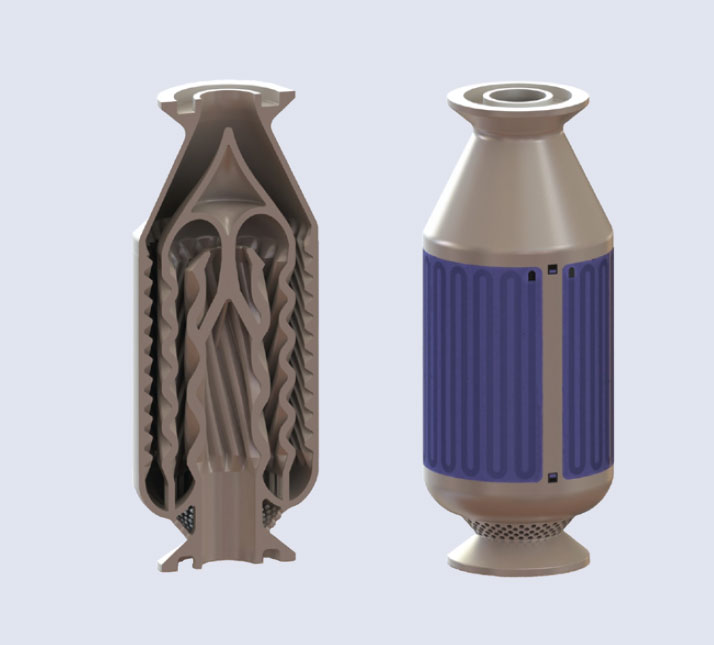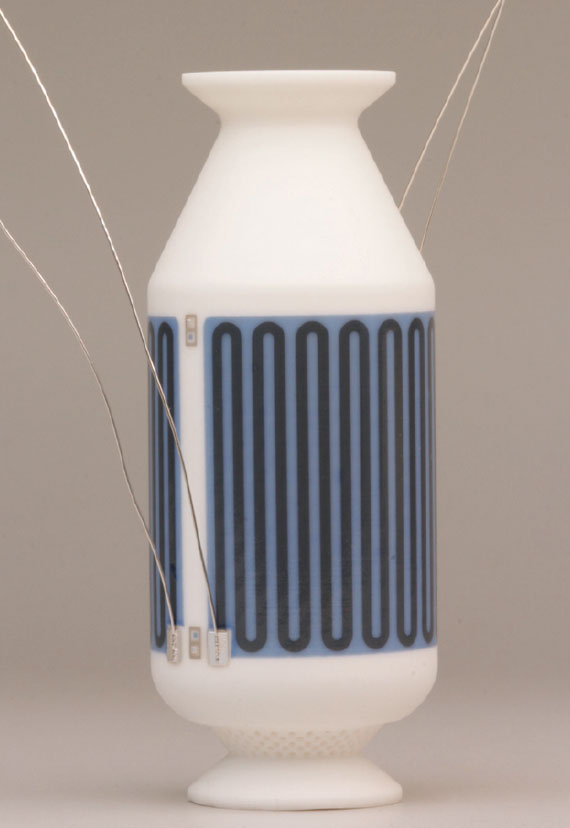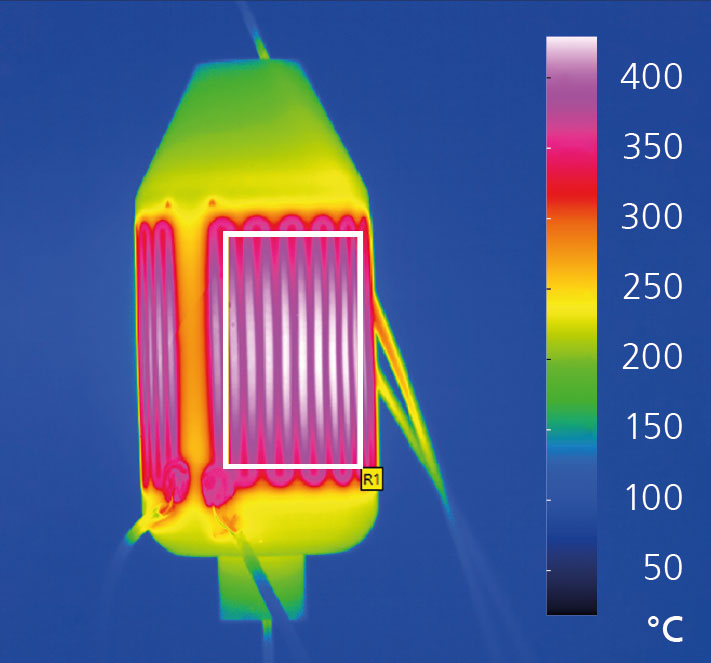
Ceramic reactor for more eco-friendly satellite propulsion systems
Current research




Satellite thrusters are used for attitude control and orbit transfer, as well as end-of-life de-orbiting to avoid space debris. These engines are mostly powered by highly toxic and expensive propellants, such as hydrazine, which are increasingly being replaced by more environmentally friendly alternatives, such as hydrogen peroxide (H2O2).
The induction of the necessary decompositionof H2O2 into water and oxygen (oxidizing agent in the combustion process) is currently carried out catalytically. Silver nets or granules coated with platinum or MnO2 are used for this purpose. Apart from its high costs, the fact that the process is not very dynamic causes problems, as satellite engines must work in finely tuned pulses to achieve the required accuracy.
Thermally induced decomposition of H2O2 as a green alternative
As an alternative to the catalytically induced decomposition of H2O2, thermal induction of the strongly exothermic reaction (T > 1000 °C) is also possible; the reaction then continues to proceed in a stable manner without further energy input. This requires temperatures above 150 °C, but no catalytically active materials.
Additively manufactured and functionalized ceramic components offer a promising approach. The reactor developed at FraunhoferIKTS (image 2) combines several properties that offer significant advantages for the application scenario. The applied heater structureenables a high-performing induction of the decomposition reaction. The Al2O3 used for the substrate is superior to metallic materialsin terms of chemical and thermal resistance and also has a low density. The complex component geometry (image 1) results in a directed fluid flow, which ensures very good mixing and prevents overheating of the externally applied heater structures despite the high reaction temperatures inside.
Combining unique IKTS competences
The manufacturing of the reactor relied on a combination of unique competences of Fraunhofer IKTS. The Al2O3 substrate is manufactured additively through the CerAM VPP technology followed by sintering at 1650 °C. Subsequently, the heater structure includingthe insulation layer and contact pads was applied by means of rotary screen printing in a thick-film process. The functional materials used for this were then sintered at 850 °C in a second thermal processing step. Finally, wires for electrical contacting were joined by means of adapted micro-welding processes and the assembly points were covered in a thermally stable manner.
Reliable operation up to 400 °C has already been demonstrated in the laboratory. Extensive real-life tests are planned for the spring of 2023. Additionally, an expansion of the material portfolio to Si3N4 and AlN is in progress.